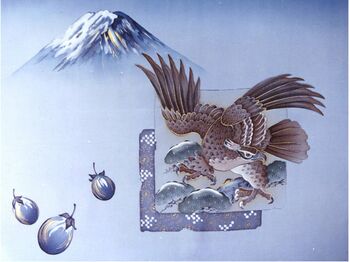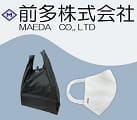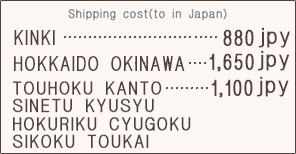 Click on the mark for details.
Click on the mark for details.The back of the forehead is used for the lining fabric of the haori tailoring.
It is a fabric that enjoys the fashion of the back of the haori with its color and pattern.
In the first place, the lining fabric of haori has the back of the forehead and the back of the shoulder (also called the back of the wing).
The back of the forehead is wide, and there is no need to sew the center of the back.
Uses high-quality fabric of the safe genuine silk brand Gunze silk roses.
One Fuji, two hawks, and three auspicious auspicious figures,
If you look at it on New Year's Day, it will be a good year, so much so that it is used in ema
It is an auspicious pattern.
(1. Fuji = the highest spiritual peak in Japan, famous as a power spot in the world
2. Falcon = A falcon with a high perspective and fluttering its wings in the sky is traditionally a symbol of good luck
3. Eggplant = It expresses that things are done, things are realized, and it is also used in judgements, etc.)
- Fabric width: about 85cm
- Fabric length: about 2.3m
- Made in Japan
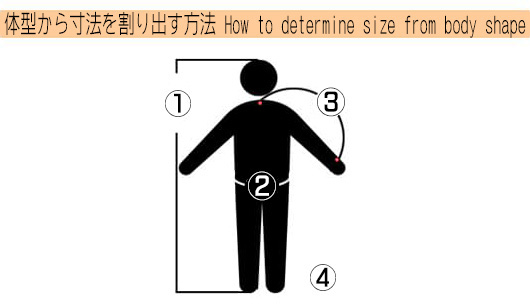
- ①「身長」/「hight」
- ②「ヒップ」または「胴回り」/「hip」or 「girth」
…胴囲の一番大きい部分です。
It is the largest part of the waist circumference. - ③「裄(ゆき)」/「Length of sleeve」
…腕を水平から下に30度まで上方に上げて、
首の後ろの骨のあたりから手首の骨まで。
首の骨のぐりぐり(第七頸椎の後ろ)から手首の骨のぐりぐりまで。
Raise your arms up to 30 degrees below horizontal, From around the back bone of the neck to the wrist bone. From the neck bone gouge (behind the seventh cervical vertebra) to the wrist bone gouge. - ④「体重」/「weight」
※襦袢の裄丈は着物の裄丈に対し約5mm短くなります。
*The sleeve length of the juban(kimono underwear) is about 5mm shorter than the sleeve length of the kimono.
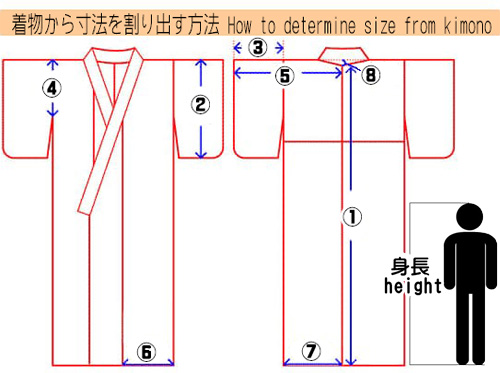
お手持ちの着物に合わせた着物や長襦袢を作りたい方は、ご自身の【身長】と、
上記図を参考に、その着物の、【①身丈・②袖丈・③袖幅・④袖付・⑤裄・⑥前幅・⑦後幅】の合計8つのサイズおを教えください。
If you want to make a jyuban(kimono underwear) that matches your kimono, please tell us your [height] and Refer to the diagram above to 【①determine the length, ②sleeve length, ③Length of sleeve, ④Width of the sleeve's seam, ⑤Length of sholder and sleeve, ⑥front width, and ⑦back width】 of the kimono.Please let me know the total 8 sizes.
※襦袢の裄丈は着物の裄丈に対し約5mm短くなります。
*The sleeve length of the juban(kimono underwear)is about 5mm shorter than the sleeve length of the kimono.












